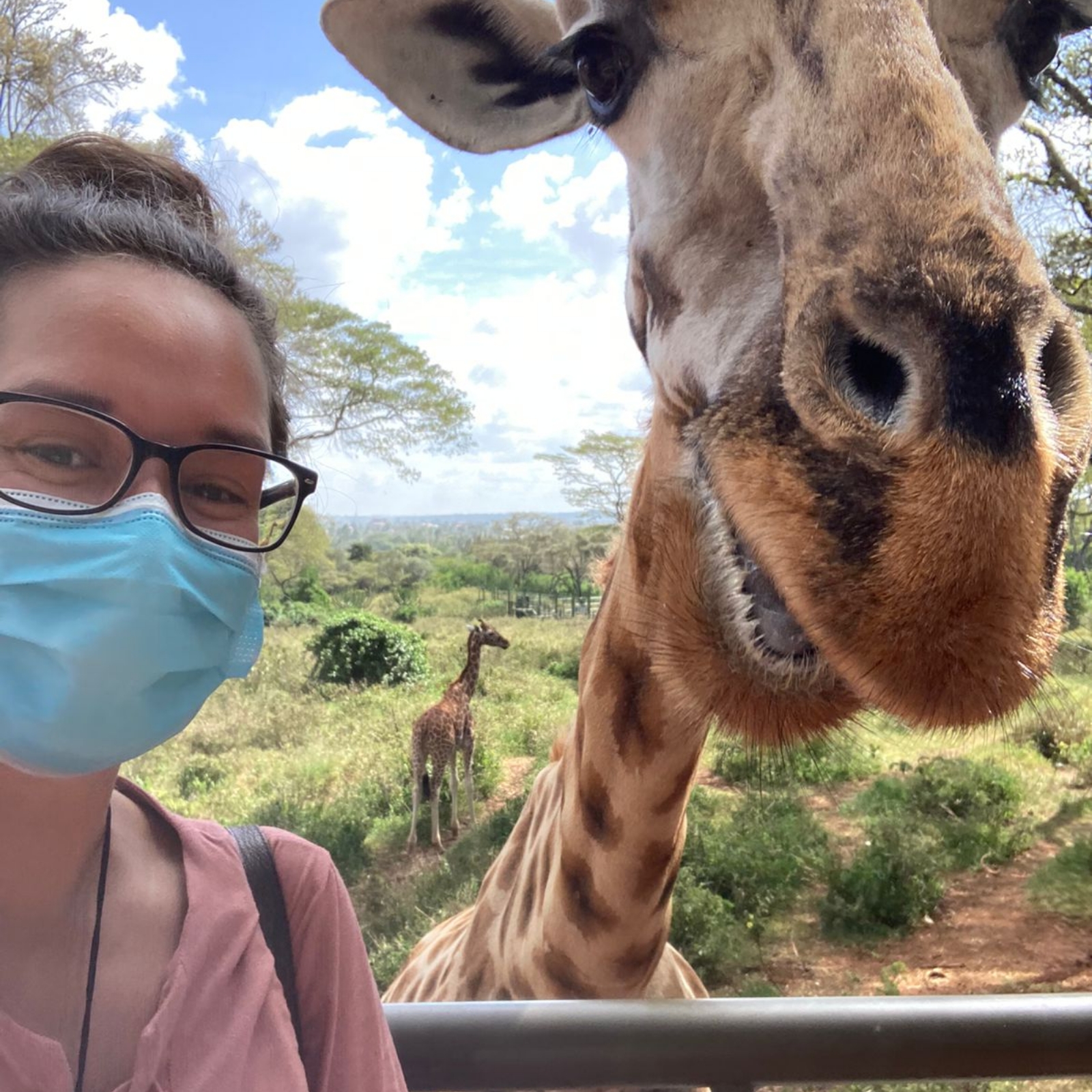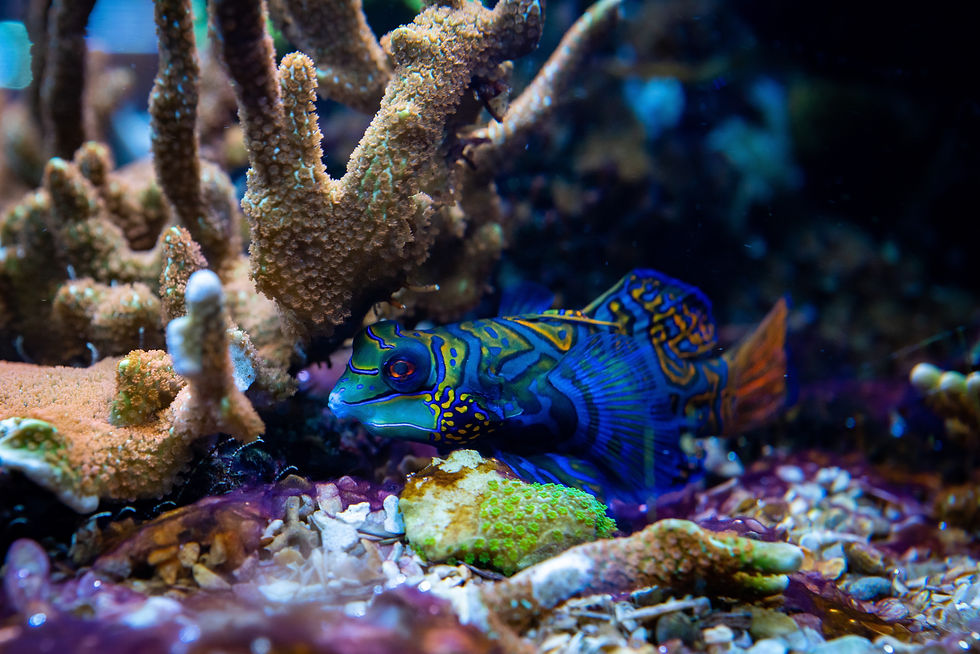Rainforest of the Sea
- Felicitas Taube

- Mar 12, 2022
- 5 min read

They cover only 1% of the ocean but make 25% of marine life. - Coral Reefs.
Each of the many organism found in coral reefs plays an unique role to keep the ecosystem healthy and functioning. Often called “rainforests of the sea”, coral reefs are believed to have the highest biodiversity on the planet. With their beautiful colors and different shapes they are always an extraordinary experience and we need to make sure
many more generations are able to enjoy their beauty.
How are they made?
On a certain date and on a certain time a synchronized coral spawning happens. Eggs and sperm come together to form coral larvae. The larvae is drawn to sunlight and makes its way to the surface, where the ocean currents drift them away. They can travel days or even weeks until they find a reef to settle. Because ocean currents follow the same course, coral reefs can be genetically connected to other coral reef far away. This connection can save the reefs, if one stronger reef is adapted to warmer water temperatures or diseases, it can spread its better genetics through the movement of the larvae. Corals need to be in best health, with as little stress as possible on that very specific time, in order to reproduce. A hard rock like structure is the perfect place to settle for a larvae to turn into polyps.

Polyps are tiny animals, closely related to sea anemones. They divide themselves into daughter polyps and over time growing into large colonies, all held together by one calcareous skeleton. They secrete layers of calcium carbonate beneath their bodies to produce a skeleton called Calicles. The polyp releases carbon dioxide, which

combined with calcium from the ocean, creates the calcium carbonate. Polyp Calicles connect to one another and build a colony that acts as a single organism. They then join other colonies to build reefs. The calcium carbonate and other animals or plants, like seaweed or giant clams add structure to the reefs and if they die, serve as a foundation for new corals. Zooxanthellae, is an algae that is in a mutualistic relationship with the coral by living inside the polyp. The algae photosynthesize and provide the coral with carbohydrates and oxygen that the coral uses as food. In return the coral provides a protected environment for the algae. The beautiful colors we see in corals is because of this algae. Coral bleaching happens if the algae leaves the coral due to undesirable conditions, like a drastic change in temperature or nutrients. When this happens the coral loses its important food source and slowly dies. Corals can survive such bleaching events if the right conditions return.
There are two types of corals: Hard Corals and Soft Corals
Hard corals are also known as the “reef building corals”, they have a skeleton and depend on the algae that lives inside them. Over time the skeleton made of calcium carbonate turns into a hard rock like structure, upon which coral larvae can settle and the reef can expand.

Soft corals as the name says, are soft and bendable and have no skeleton. They resemble plants or trees and grow wood like cores and fleshy rinds for protection. Soft corals do live in colonies but do not build reefs.

What corals need to survive:
Under perfect conditions coral reefs and all other organisms can thrive, but as every organism, corals can become stressed and diseased if something is out of balance.
1. Clean Water:

As described above, polyps need the sea water´s calcium to produce their skeleton and algae needs sunlight to photosynthesis. If the ocean gets polluted by sewage, the contaminated waters carry chemicals, nutrients and bacteria. The nutrients can stimulate an overgrowth of algae. Unlike the algae living in the polyps, other algae species in the water compete with the corals for space. If the water gets too cloudy or it gets covered with sediments, the sunlight can’t reach the tiny algae in the polyp and therefore the algae can´t photosynthesis, which could lead to fatal outcomes.
2. Water temperature:

The water temperatures vary largely on the location of the reef and the reef species. Many can adapt to moderate temperature changes and some even survive coral bleaching. Corals can recover if the temperatures lower again and the algae returns to its host.
3. Healthy wildlife population:
Each species plays its own role in a coral reef to maintain a healthy and balanced ecosystem. Some are herbivores, feeding on plant material, like algae or seaweed (which competes with coral reefs for space). Others like sharks keep the fish population under control. “Cleaner” fish and shrimp keep the other fish clean by freeing them from parasites. Worms and snails feed on or filter organic matter like algae or seaweed. The white sand beaches everyone loves are thanks to the Parrotfish that eat the reef itself. The parrotfish tries to get to the tiny algae that lives inside the polyp and thereby grinds the coral skeleton with its teeth. A single parrotfish can produce 381 kilograms of sand each year.


Benefit to Humans
Coral reefs naturally clean water and air and break down pollutants.
Coastal protection: The reef protects the people living along the coast by serving as a wave breaker. The reef structures are barriers and therefore storms are slowed down and coastal erosion is reduced. Looking into coral reefs can provide records of climatic events throughout history. The impacts of storms and human activity can be seen through changes in coral growth and formation.
Biodiversity: Coral reefs are homes to millions of plant and animal species. They provide the perfect fish nursery with lots of hiding opportunities for a huge number of marine species. Corals provide nitrogen and other essential nutrients for marine life, which if we eat the fish also gain.


Fishing Industry: Many people depend on coral reefs for their income and food source. A healthy coral reef maintains a healthy fishery business.
Tourism: Scuba diving, snorkeling, boat tours and beach restaurants all depend on beautiful coral reefs. Tourism is one of the largest industries and most of it depends on the natural environment!
Medicine: Corals and many other organisms living in the reefs have developed a chemical defence to protect themselves from predators and diseases or to prevent the excessive growth of other competing organisms. This chemical is used by scientists to produce medicine that helps fight illness like leukemia, Alzheimer, skin cancer, cardiovascular diseases or bacterial or virus infections. The list is long and there is much more medical knowledge to gain.
Who knows what else we gain from such a magnificent ecosystem, what benefits and new knowledge there is to discover. Isn't that reason enough to protect coral reefs and their millions of organisms?
What can I do to protect Coral reefs?
Conserve water- the less you use, the less runoff and wastewater will pollute the ocean
Organic fertilizer- chemicals and pesticides flow into water systems and pollute the ocean (can cause algae bloom)
Reef safe diving and snorkeling- Do not stand on them or touch them. Be careful with the boat anchor.
Use environmentally friendly transportation- bike, walk public transport (the ocean takes up the CO2 emissions we produce)
A reef-friendly sun protection- the chemical in some sunscreens can be harmful to the reef
Be conscious when buying aquarium fish- make sure they have been collected in a sustainable manner. Sadly, many public aquariums catch fish from reefs and many other organisms in an unsustainable way, which causes stress and destruction to the reef.
Reference:



Comments